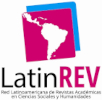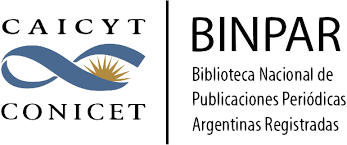Envíos
Lista de comprobación para la preparación de envíos
Todos los envíos deben cumplir los siguientes requisitos.
- La petición no ha sido publicada previamente, ni se ha presentado a otra revista (o se ha proporcionado una explicación en Comentarios al editor).
- El fichero enviado está en formato OpenOffice, Microsoft Word, RTF, o WordPerfect.
- Se han añadido direcciones web para las referencias donde ha sido posible.
- El texto tiene interlineado simple; el tamaño de fuente es 12 puntos; se usa cursiva en vez de subrayado (exceptuando las direcciones URL); y todas las ilustraciones, figuras y tablas están dentro del texto en el sitio que les corresponde y no al final del todo.
- El texto cumple con los requisitos bibliográficos y de estilo indicados en las Normas para autoras/es, que se pueden encontrar en Acerca de la revista.
- Si esta enviando a una sección de la revista que se revisa por pares, tiene que asegurase que las instrucciones en Asegurando de una revisión a ciegas) han sido seguidas.
Artículos
la conforman contribuciones sobre temáticas geográficas, sociales y ambientales cuya extensión no debe exceder las 25 páginas (incluyendo notas, bibliografía, mapas, cuadros, etcétera). Es la sección central de la revista. Y está abocada a estudios e investigaciones de índole académica.
Aportes Académicos
abierta a contribuciones de comentarios críticos, avances de proyectos de investigación, informes de actividades de extensión, proyectos pedagógicos didácticos. Serán admitidas contribuciones con una extensión máxima de 15 páginas (incluyendo notas, bibliografía, mapas, cuadros, etcétera).
Reseñas
destinada tanto a reseñas bibliográficas (de artículos y libros) como de otros formatos (reseñas de documentales, videos, películas, entre otros). La extensión de estas contribuciones comprende un mínimo de 3 páginas y un máximo 6 páginas (incluyendo notas, bibliografía, mapas, cuadros). Serán especialmente valoradas aquellas reseñas que articulen en su desarrollo dos o más textos.
Conversaciones
espacio destinado a la presentación de diálogos donde se compartan saberes y/o prácticas espaciales – de comunidades indígenas, movimientos sociales, campesinos, entre otros- no necesariamente institucionalizados, legitimados e identificados como científicos/académicos. Y a referentes académicos sobre temas relevantes de interés en la revista. Serán admitidas una extensión máxima de 15 páginas (incluyendo notas, bibliografía, mapas, cuadros, etcétera).
Traducciones
sección de la revista destinada a la presentación de trabajos científicos, entrevistas o conversaciones ya publicados en otras revistas de otras lenguas y que han sido traducidos por los propios autores contando con previa autorización de los otros espacios donde ya se ha publicado y respetando la extensión y formato expresados en la sección artículos.
Miscelánea sobre Geografía y Arte
Este espacio está destinado al abordaje de asuntos en la interfase entre arte y geografía. La propuesta invita a personas vinculadas a estas áreas – artistas visuales, geógrafxs, músicxs, escritorxs, musicólogxs, antropólogxs, sociólogxs, etc – para que propongan un diálogo que tenga como resultado un texto híbrido y autoral con una extensión de 3 a 7 páginas. Se estimulará el uso de diferentes soportes (imágenes/fotografía, sonoros, cartográficos, plataformas virtuales, colajes) y la exploración de diversos géneros (poesía, ensayo, carta, crónica, canción).
Aviso de derechos de autor/a
Aquellos autores/as que tengan publicaciones con esta revista, aceptan los términos siguientes:
- Los autores/as conservarán sus derechos de autor y garantizarán a la revista el derecho de primera publicación de su obra, el cuál estará simultáneamente sujeto a la Licencia de reconocimiento de Creative Commons (indicada abajo) que permite a terceros compartir la obra siempre que se indique su autor y su primera publicación esta revista.
- Los autores/as podrán adoptar otros acuerdos de licencia no exclusiva de distribución de la versión de la obra publicada (p. ej.: depositarla en un archivo telemático institucional o publicarla en un volumen monográfico) siempre que se indique la publicación inicial en esta revista.
- Se permite y recomienda a los autores/as difundir su obra a través de Internet (p. ej.: en archivos telemáticos institucionales o en su página web) antes y durante el proceso de envío, lo cual puede producir intercambios interesantes y aumentar las citas de la obra publicada. (Véase El efecto del acceso abierto).

Esta obra está bajo una Licencia Creative Commons Atribución-NoComercial-CompartirIgual 4.0 Internacional.





